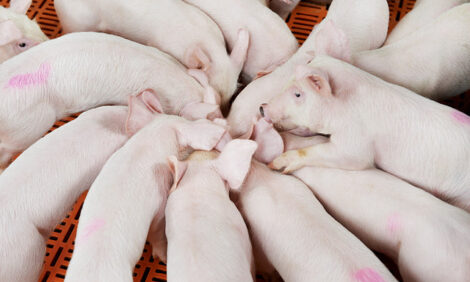



CME: Herd Liquidation Not as Bad as First Thought
US - When corn prices hit $8+ back in August, there was plenty of talk about rapid liquidation of the US cattle and hog breeding stock, write Steve Meyer and Len Steiner. Individual producers may have reduced some of
their numbers but the big picture data shows that the impact
so far is not as deep as previously thought. Some segments
within the beef and hog industry have been affected more than
others due to timing of the corn price spike and overall feed structure. Consider the trend in US cow slaughter. Total US cow
slaughter has been running below year ago levels since July, in
large part due to a sharp decline in the number of beef cows coming to market. For the period Sep. 2 - Oct 20 (latest official data),
US producers sent 895 thousand head of beef and dairy
cows to market, 8% less than a year ago. Of this total, however, there were 437 thousand dairy cows, about 10% more than a
year ago. Beef cow slaughter, on the other hand, was down 21%
from last year. As we have noted before, the impact of high corn
and hay prices on dairy producers is much more immediate. They
also have the ability to affect milk production, and hence prices,
almost immediately. Beef cow producers this past summer and
fall have seen some improvement in feed conditions. As long as
they have grass, high corn prices are not an immediate concern.
Also, the devastating drought of 2011 in the Southern Plains already had forced producers to liquidate significantly and the available stock this year is the smallest in decades. As beef cow producers transition from grass to hay, however, there is a fear we could
see more cows come to market in January and February. Hay inventories are the smallest in many years and good quality hay
remains a precious commodity.
There was plenty of debate among industry analysts back
in August as to what the pace of sow herd liquidation would be
over the fall and winter. Some argued, including Steve Meyer in a
number of publications, that strong hog prices for next summer
and already low sow herd inventories would limit the impetus to
send sows to market. After all, hog futures indicated a small profit
for hogs coming to market next summer. US sow slaughter for the
period Sep 2 - Oct 20 shows producers sent 445,000 head to market, about 12,163 head or 2.8% more than a year ago. But sending
more sows to slaughter is only one of the ways in which producers
can reduce the size of the breeding herd. Normally a sow will produce 4 litters before being replaced. The normal rate of replacement provides another way to reduce the size of the breeding herd.
Indeed, the last USDA Hogs and Pigs report showed that producers were able to lower the size of the breeding herd inventory
despite a modest increase in sow slaughter and more cull sows
coming from Canada. This implied that more gilts were sent to
slaughter rather than held back for normal replacement. USDA
does not track gilt slaughter but data from University of Missouri indicates that gilt slaughter during the last four weeks
(through Oct 20) was down 1.3% from a year ago. With only a
modest increase in sow slaughter and fewer gilts going to
slaughter, it is unlikely that come December 1 we will see the
kinds of breeding herd reductions that many are counting on.









